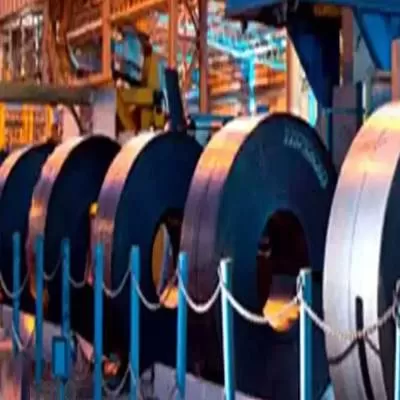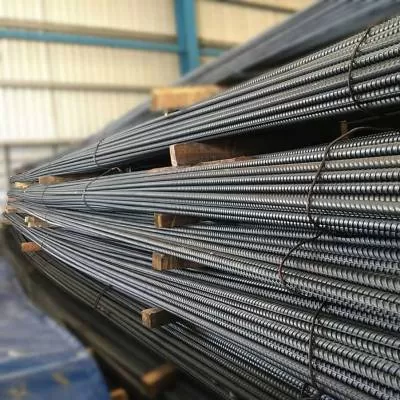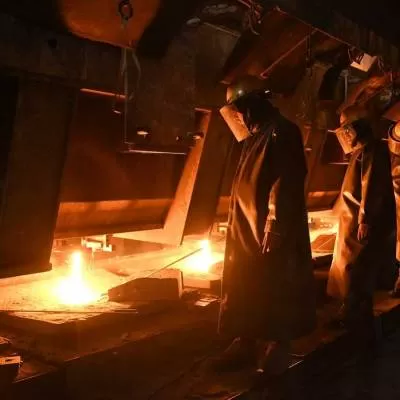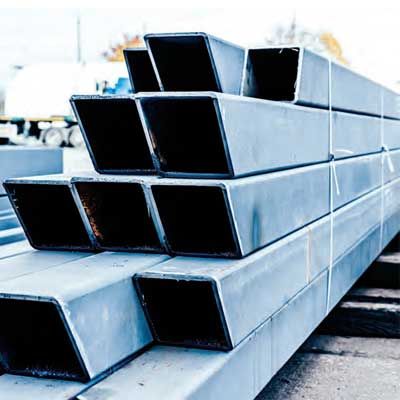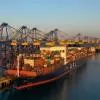- Home
- Building Material
- Steel
- Fastest Growing steel companies in India
Fastest Growing steel companies in India
India´s steel sector has been impacted due to weak domestic demand along with lack of construction activities. Worse is that, steel producing companies have also been impacted by low cost steel import from China and other Asian countries, from where steel import has increased tremendously during the last couple of years. As a core sector, steel is certainly one of the most crucial industrial segments of the economy, and it is, in the true sense, the backbone of Indian infrastructure and construction activity. Despite all the growth and development that has taken place, there is huge scope for growth in every sector of the economy, and the steel sector is no exception to it.
In fact, India offers huge scope for growth as the country is comparatively experiencing low per capita steel consumption, which is expected to rise with an increase in infrastructure construction and the thriving automobile and railways sectors. Also, if the per capita consumption of steel is considered, during 2014, it was around 60 kg, which is just one fourth of the international average; this is a big growth opportunity. Further, if we consider the situation in the Indian context, the sector is closely related to the construction and contracting sector as around 63 per cent of demand comes from the infrastructure sector and around 22 per cent from the fabrication segment.
Today, India is the third-largest steel producer in the world. In 2015, the country produced 91.46 million tonne of finished steel and the total finished steel production increased at a CAGR of 7.45 per cent over FY11-15. Driven by rising infrastructure development and the growing demand for automotives, steel consumption is expected to reach 104 million tonne by 2017. Production is expected to increase from 100 mtpa to 112.5 mtpa by FY16 and 300 mtpa by 2025. During January to November 2014, total steel production was 76.2 million tonne. Considering this, though there is a huge scope in the Indian market with 100 per cent FDI being permitted for infrastructure, this will push consistent demand in times to come.
The current scenario may seem bleak as the ground reality is not that robust, yet there is a huge competitive advantage as India is slated to become the second largest producer of steel by 2016. The country needs 210 billion investments during the next 10 years to build a capacity of 300 mtpa.
Although the government is mooting about ´achche din´, but for the infrastructure and construction sector, it is too early to predict a turnaround. While on one hand, there is not much activity on the ground with the real estate sector also experiencing an acute demand crunch; on the other hand, due to dearer loan, interest cost is working as double whammy for the companies in the infrastructure, construction and capital goods space. That said, the sector has been among the severely impacted ones, amid the slowdown. Moreover, its performance in FY15 only extended this dismal show. The biggest culprit for steel companies has been the rising interest cost, which persistently increased on almost all companies. India´s steel sector has been impacted due to weak domestic demand along with lack of construction activities. Worse is that, steel producing companies have also been impacted by low cost steel import from China and other Asian countries, from where steel import has increased tremendously during the last couple of years. As a core sector, steel is certainly one of the most crucial industrial segments of the economy, and it is, in the true sense, the backbone of Indian infrastructure and construction activity. Despite all the growth and development that has taken place, there is huge scope for growth in every sector of the economy, and the steel sector is no exception to it. In fact, India offers huge scope for growth as the country is comparatively experiencing low per capita steel consumption, which is expected to rise with an increase in infrastructure construction and the thriving automobile and railways sectors. Also, if the per capita consumption of steel is considered, during 2014, it was around 60 kg, which is just one fourth of the international average; this is a big growth opportunity. Further, if we consider the situation in the Indian context, the sector is closely related to the construction and contracting sector as around 63 per cent of demand comes from the infrastructure sector and around 22 per cent from the fabrication segment. Today, India is the third-largest steel producer in the world. In 2015, the country produced 91.46 million tonne of finished steel and the total finished steel production increased at a CAGR of 7.45 per cent over FY11-15. Driven by rising infrastructure development and the growing demand for automotives, steel consumption is expected to reach 104 million tonne by 2017. Production is expected to increase from 100 mtpa to 112.5 mtpa by FY16 and 300 mtpa by 2025. During January to November 2014, total steel production was 76.2 million tonne. Considering this, though there is a huge scope in the Indian market with 100 per cent FDI being permitted for infrastructure, this will push consistent demand in times to come. The current scenario may seem bleak as the ground reality is not that robust, yet there is a huge competitive advantage as India is slated to become the second largest producer of steel by 2016. The country needs 210 billion investments during the next 10 years to build a capacity of 300 mtpa.


